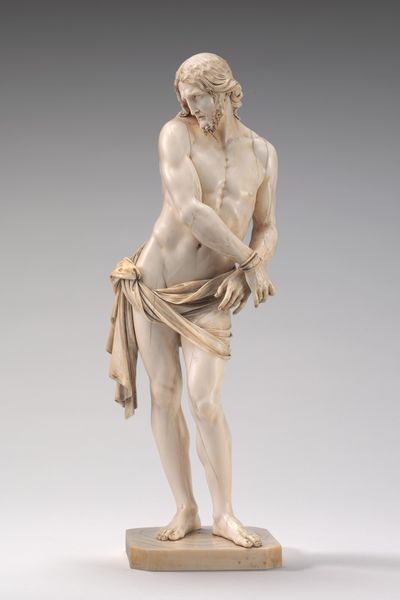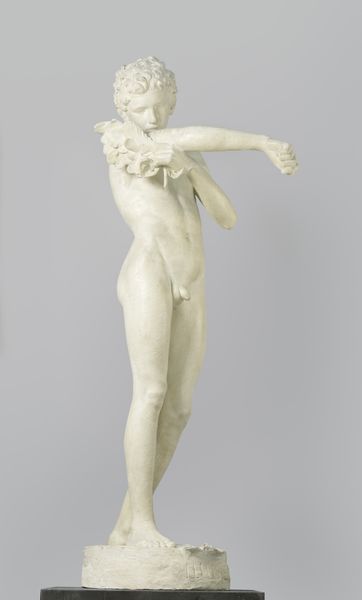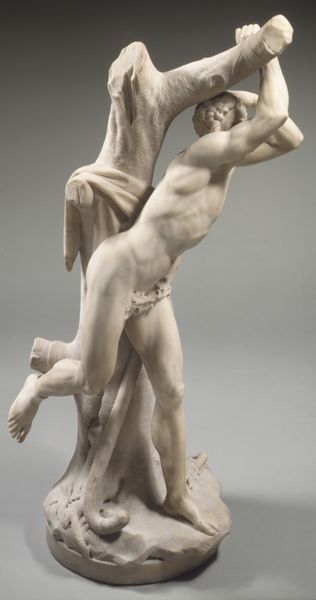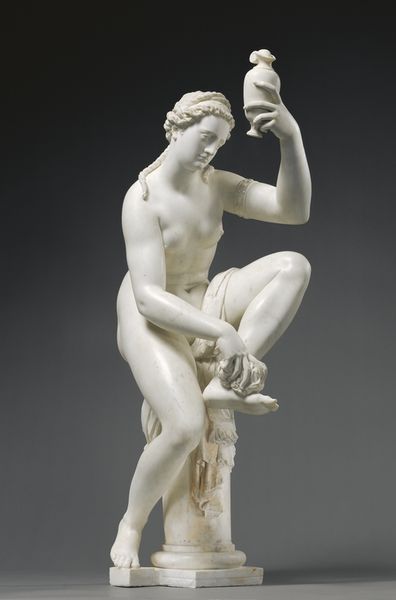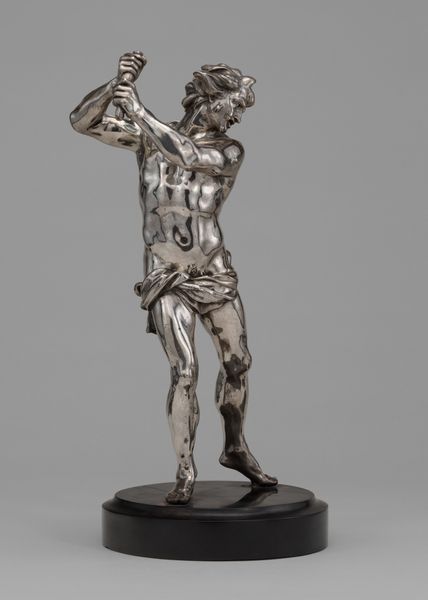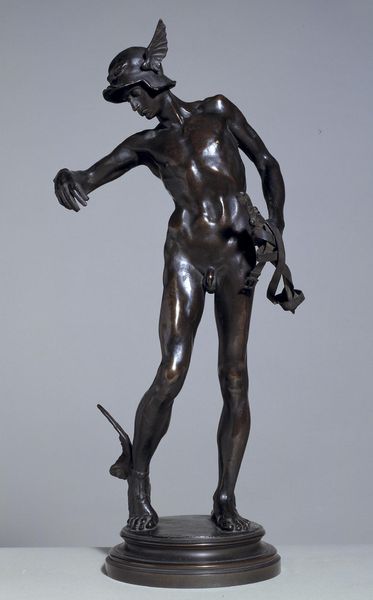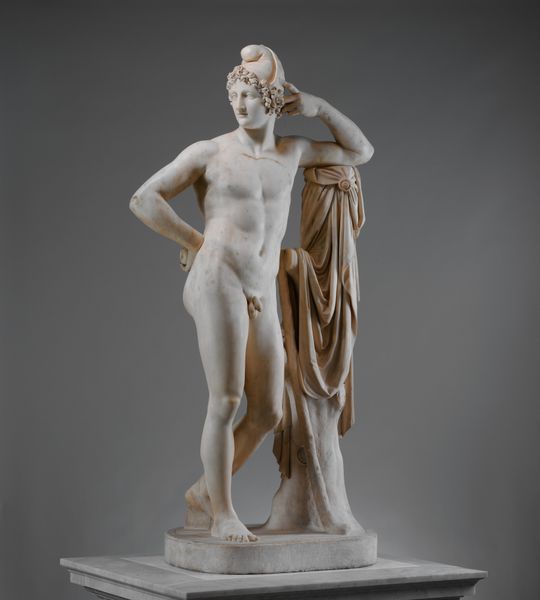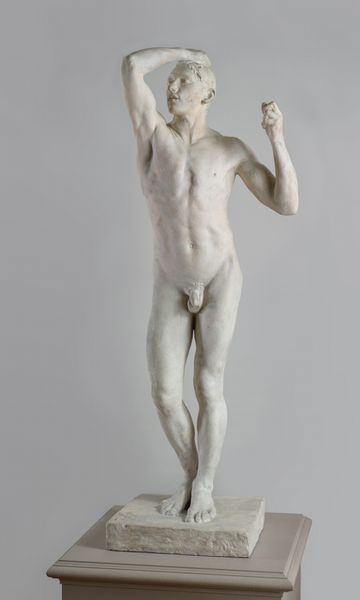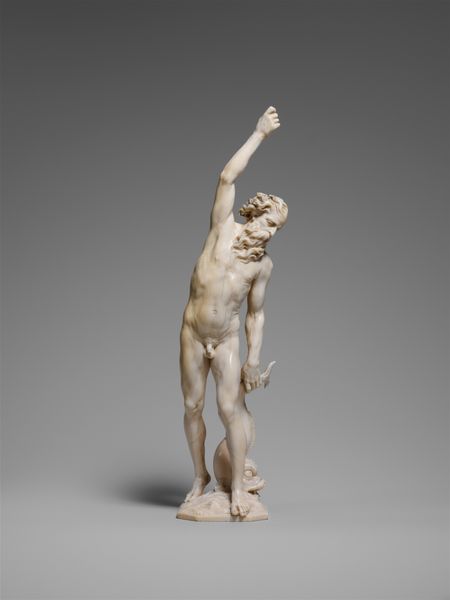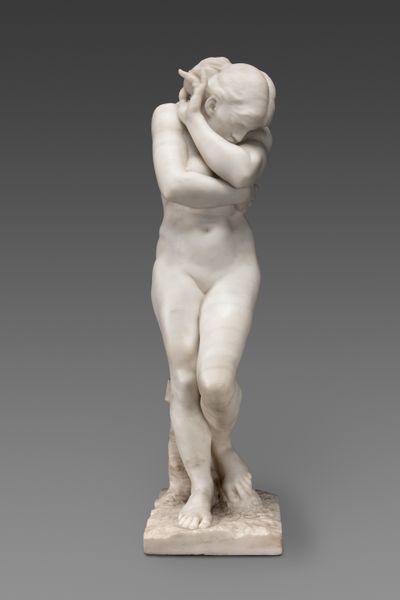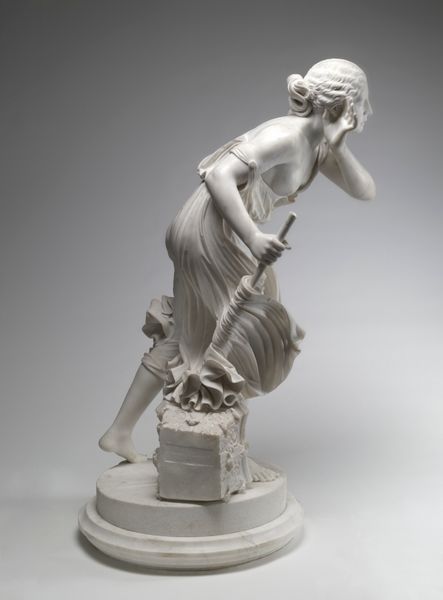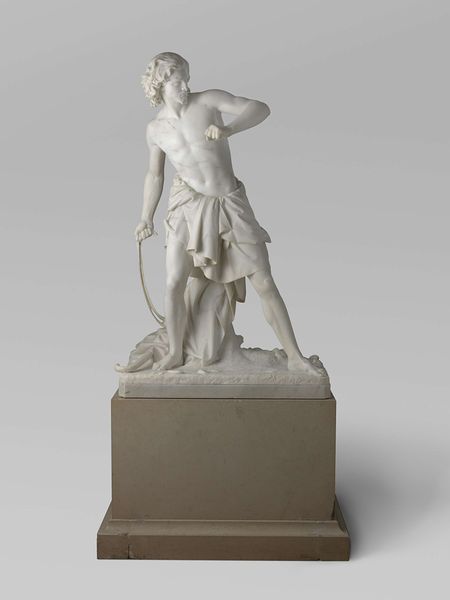
glass, sculpture, wood, ivory
#
portrait
#
statue
#
narrative-art
#
baroque
#
figuration
#
glass
#
sculpture
#
wood
#
genre-painting
#
ivory
Dimensions: 53.3 cm (21 in.)
Copyright: Public Domain
Curator: This is "Old Beggar Carrying Child" crafted by Simon Troger sometime between 1735 and 1750. Troger, celebrated for his Baroque sculptures, rendered this piece primarily from wood and ivory, with delicate glass accents. What's your initial impression? Editor: There’s a stark contrast. The old man seems weighed down by age and poverty—his face is so weary—but then there’s this incredibly buoyant, almost mischievous-looking child on his shoulders, hand raised like he’s greeting the world. It’s heartbreaking and uplifting at the same time. Curator: Exactly! It embodies this poignant dichotomy of the Baroque era. Troger masterfully captured that blend of human frailty with bursts of spirited hope, even in the humblest subjects. Editor: And it’s fascinating how he used different materials to create this effect. The dark wood for the ragged clothing emphasizes the beggar’s destitution, while the ivory lends the figures this almost ethereal, saintly quality. Was ivory a common choice then? Curator: Fairly so, yes. Ivory offered a certain luminosity, lending the sculpture an emotional gravity—think of it adding dignity to this common subject, almost like imbuing them with enduring, mythical qualities beyond their obvious station. But more than that, the decision feels profoundly spiritual. It reminds me how even those facing life's hardships often become the very supports upon which new generations rise. There is deep symbolism here about burdens and legacy. Editor: You're right. The child becomes a symbol of potential, even of hope in what seems like a bleak existence. The old man isn’t just a beggar; he's a vessel carrying the future. The image also taps into historical archetypes: think of Saint Christopher carrying the Christ Child. Maybe it is the fragility of glass that brings this theme to our attention! Curator: Troger encourages us to reconsider what we value, inviting us to see beauty, tenderness, and promise where society often chooses to look away. What starts as a figure of need evolves into something emblematic of love. Editor: I agree—a powerful statement about the enduring strength found in what appears to be the most vulnerable of connections. These materials enhance that feeling with an immortalizing spirit.
Comments
No comments
Be the first to comment and join the conversation on the ultimate creative platform.
